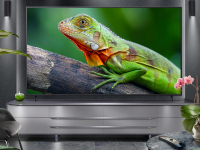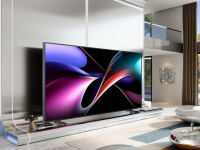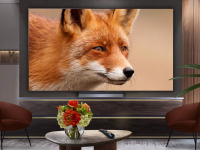 When you hear the words “streaming music”, you probably think of monthly payments for a Spotify or Apple music membership or even worse, listening to your favourite song as a terrible quality Mp3 file you downloaded, though a pair of £4 headphones, desperately trying to remember why you ever enjoyed the song at all… not exactly ideal.
When you hear the words “streaming music”, you probably think of monthly payments for a Spotify or Apple music membership or even worse, listening to your favourite song as a terrible quality Mp3 file you downloaded, though a pair of £4 headphones, desperately trying to remember why you ever enjoyed the song at all… not exactly ideal.
Quite a few years ago, this is what streaming music was. But with regards to the current streaming services, I’ll be honest; I love them. My world revolves round my Spotify playlists, and if I cant find the right playlist to get me through what ever activity I’m doing, I’m not really sure what to do. When it comes to streaming your personal music library, it shouldn’t be any different experience to that of listening to your favourite CD or vinyl records. As technology has progressed the quality of digital music has gotten so good that it’s getting harder and harder to tell the difference between that of a CD quality or digital streaming.
Enter music streamers; they’ve been around a while and have often come along with a hefty price tag. Well, the good news is that you can purchase a really good quality streamer that can handle 24bit 192hz high resolution audio tracks for under £500, leaving plenty of pocket money leftover for music buying. Happy days!
I’m here to discuss the new Pioneer N30-AE, a mid range streamer that does exactly what it says on the tin: it streams music from every possible avenue you could ask for.

With greater streaming support than ever, including Wi-Fi, Google Cast and FireConnect, the Pioneer N30ae is their best streamer to date.
A quick look at the unit and it’s clear this is serious piece of kit. It’s not a small unit designed to be hidden, it is designed to take pride of place on top of your system next to say, a CD player. It features a very minimal design on the front facia with some basic controls, a very clear full colour display which offers track information, album artwork and a progress bar so you can see exactly where you are on the track of your choice.
The reason it doesn’t cost north of £500 is because the quality of the DAC (digital analogue converter) isn’t quite as deft as those in higher end units. On higher end DACs, music goes though the system and is “up sampled” giving you the best quality of sound, even on lower-resolution formats. The N30-AE on the other hand will ultimately give as good as it gets, meaning higher quality audio will sound great, while overly compressed formats still may not sound their best.
As an iPhone user, setup for me was VERY straight forward. Taking advantage of the built in Wi-Fi, I connected the unit to my network with ease. Once up and running, I could take advantage of Apple Airplay, Spotify Connect, as well as pulling any of my music from my network hard drive via the DLNA services built within the unit. Unlike other manufacturers, the Pioneer N30-AE doesn’t use a dedicated application, which is brilliant as you don’t need to go through a third party just to play some music. When up and running, I was completely sold on the Pioneer. Utilising my already familiar iPhone interface meant that playback was a doddle.
The sound of the unit, as I mentioned earlier, is dictated by the source that you are putting though it. Apple devices cannot handle hi-res audio formats, so I was a little limited with what I could play and of course, this is only a basic streamer so the grunt of the hard work was being done by the Arcam system I was playing it though.
If you’re after a quick no-fuss way to stream your music from your smart phone or tablet, then this is exactly the unit you should look towards. If you’re after getting more from your digital music and wish to go further down the path of high resolution audio, then it could be worth having a look at the Arcam CDS27 or the Cambridge Audio CXN. Why not pop-in to your local Richer Sounds store to hear a comparison between these amazing streamers?
Shop with Richer Sounds today.
Author: Garrett, Plymouth store





